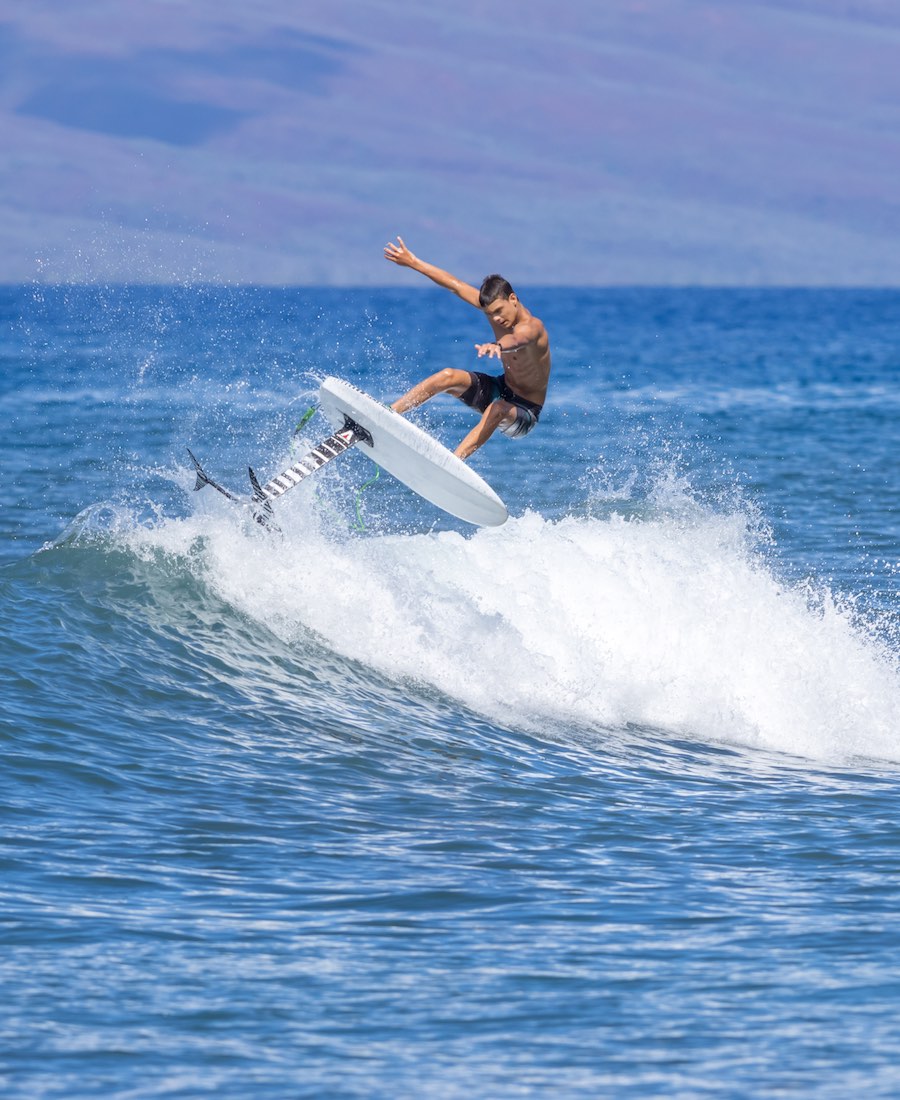
Foil Wings
The foil is made up of the mast, fuselage and front and rear wings.
As with boards, there’s many different combinations of front and rear wings, masts and fuselage sizes, depending on the rider and what you want to do.
Any foil can fly and get you up. It’s what speed, what manoeuvrability and what stability you want that will decide your foil set up.

Wing Sizes
Foils have two wings.
- Front Wing – The ‘Lifter’. This gets you out of the water. It gives you the uplift to be elevated. They are bigger than rear wings.
- Rear Wing – The ‘Stabiliser’. Its job is to stabilise your ride.
Small front wings are generally faster, more agile and more manoeuvrable. But they have less lift and are a bit less stable and easy to use. More experienced surfers will generally use a smaller wing – especially in bigger waves.
Larger front wings give you more stability and more lift, but they have less speed and are less manoeuvrable. You typically use a larger front wing for learning and down-winding, where you need more initial lift. It’s important to remember in downwinding that you’re only riding a bump, not a broken wave, so you need that extra lift to stay up.

Factors Impacting Wing Size
- Weight: A person who weighs more needs a bigger foil to get them up and foiling early. A lighter person may find that a big foil can get them foiling really early, but it can then be hard to control the bigger foil and keep it in the water.
- Weather conditions: If you’re foiling somewhere that has a lot of wind, you can often go a little smaller than somewhere that is protected.
- Use: Surfers will generally use a smaller wing because they are more manoeuvrable. Downwinders will often go a little bigger to keep their lift.
- Experience: Beginners will generally use bigger wings to help get lift. More experienced foilers can usually reduce their wing size once they have mastered getting the foil out of the water.
- Foil Age: The newer wings have improved a lot over the early versions and generally get riders going in less wind. They now have more power and more stability, which means they can be used across a bigger wind range.




